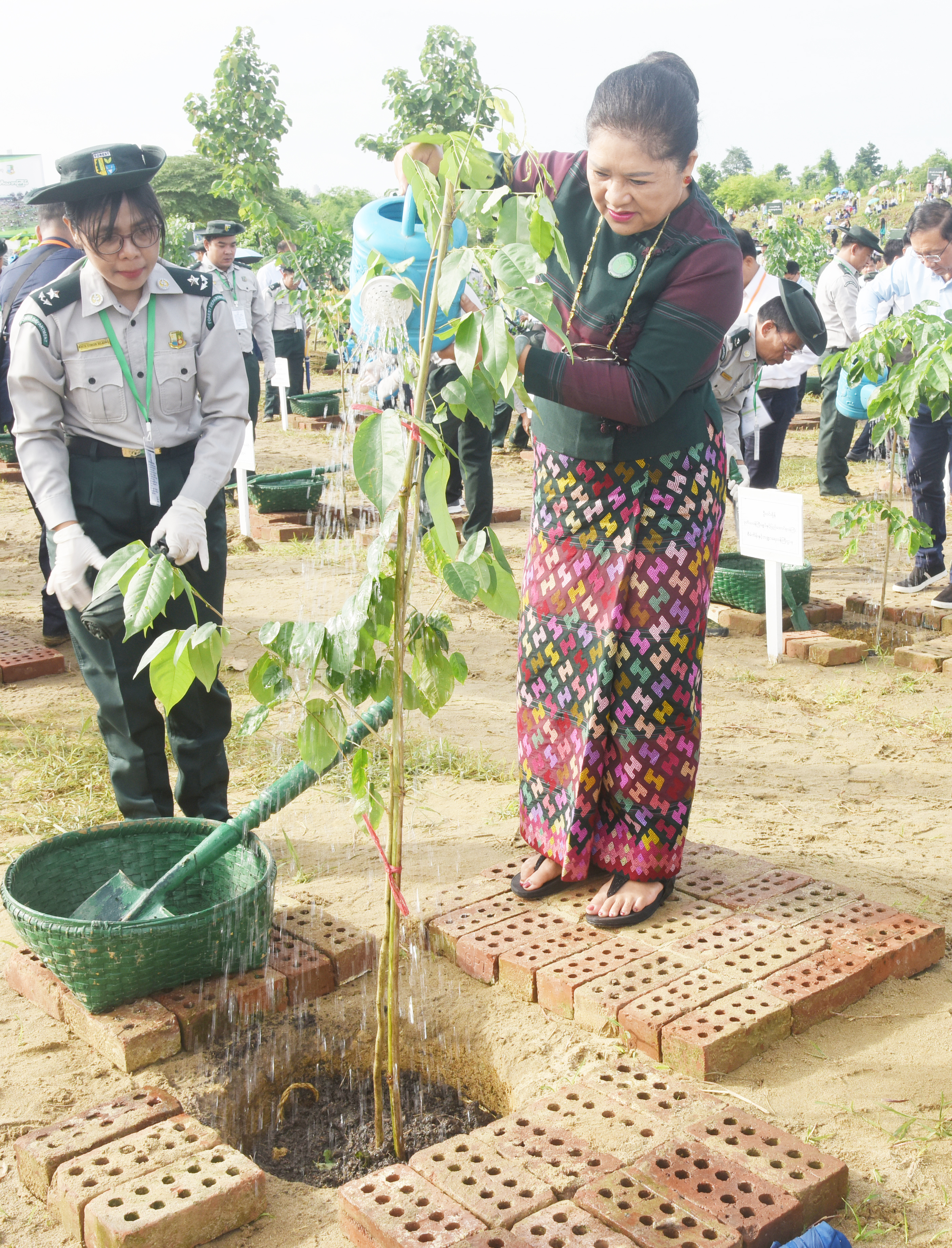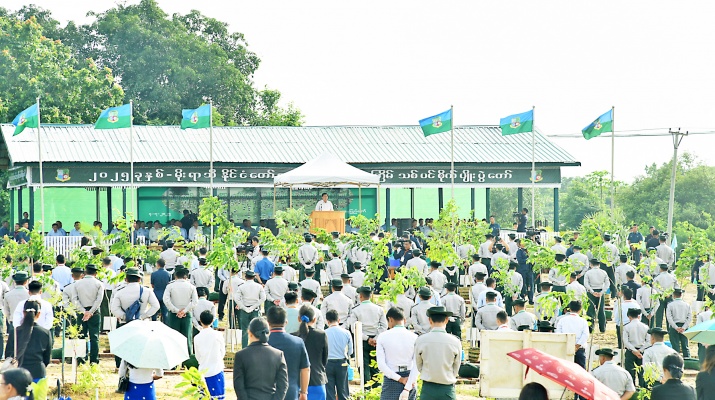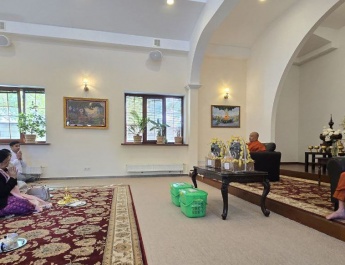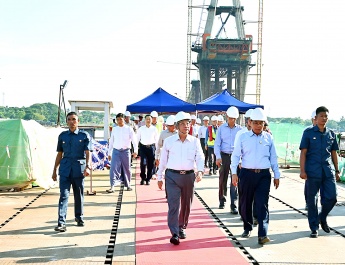NAY PYI TAW July 4
The second monsoon treeplanting ceremony for 2025 of Nay Pyi Taw, Union Territory took place at Yanaungmyin forest reserve in Dekkhinathiri Township, Nay Pyi Taw, Union Territory this morning. Chairman of the State Administration Council Prime Minister Senior General Min Aung Hlaing took part in the ceremony and planted a star flower sapling.
Also present at the ceremony together with the Senior General were Vice Chairman of State Administration Council Deputy Prime Minister Vice-Senior General Soe Win, the SACSecretary the SAC Joint Secretary, SAC members, union level dignitaries, union ministers, the Nay Pyi Taw Council chair, senior military officers from the Office of the Commander-in-Chief, deputy ministers, civil servants including officers from the ministries, faculty members and students of Naypyitaw State Academy, Naypyitaw State Polytechnic University, Government Technical Institute (Nay Pyi Taw), Forestry and Environmental Science University and officials.
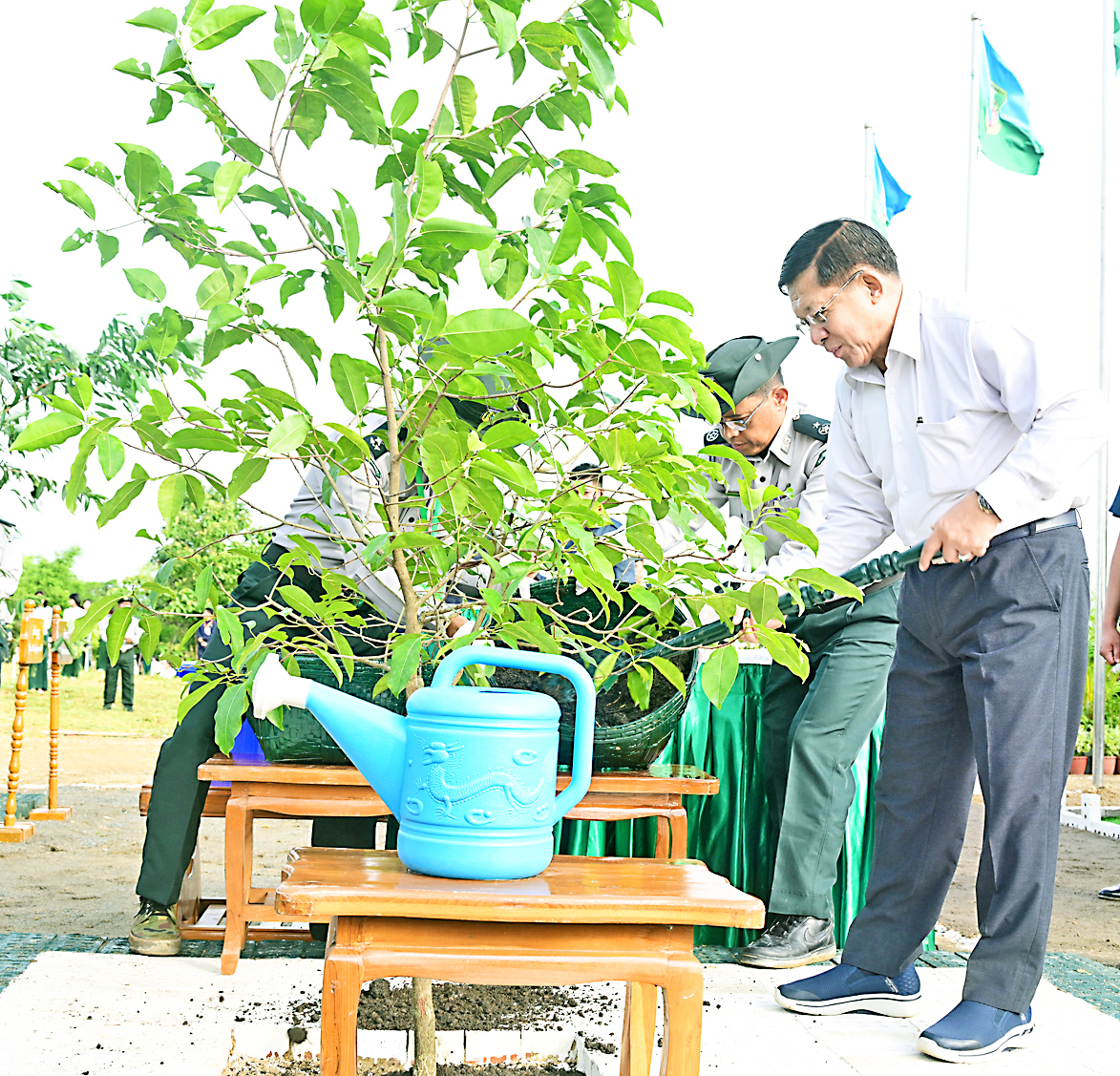
In his address, the Senior General said the State is playing a leading role in organizing annual monsoon tree-planting ceremonies in the entire country with the aim of ensuring a balanced climate, improving the ecosystem through environmental greening activities, handing down a vibrant and healthy environment for posterity, and organizing everyone’s involvement in tree planting and conservation by arousing public awareness of true value of trees and forests.
At this second ceremony, 3,000 seasonal flowering trees of 18 different species will be planted.
At the first ceremony 3,000 trees of 16 different kinds were grown in Yanaungmyin forest reserve on 15 June.
Everyone understands the many benefits trees are presenting to the world and mankind.
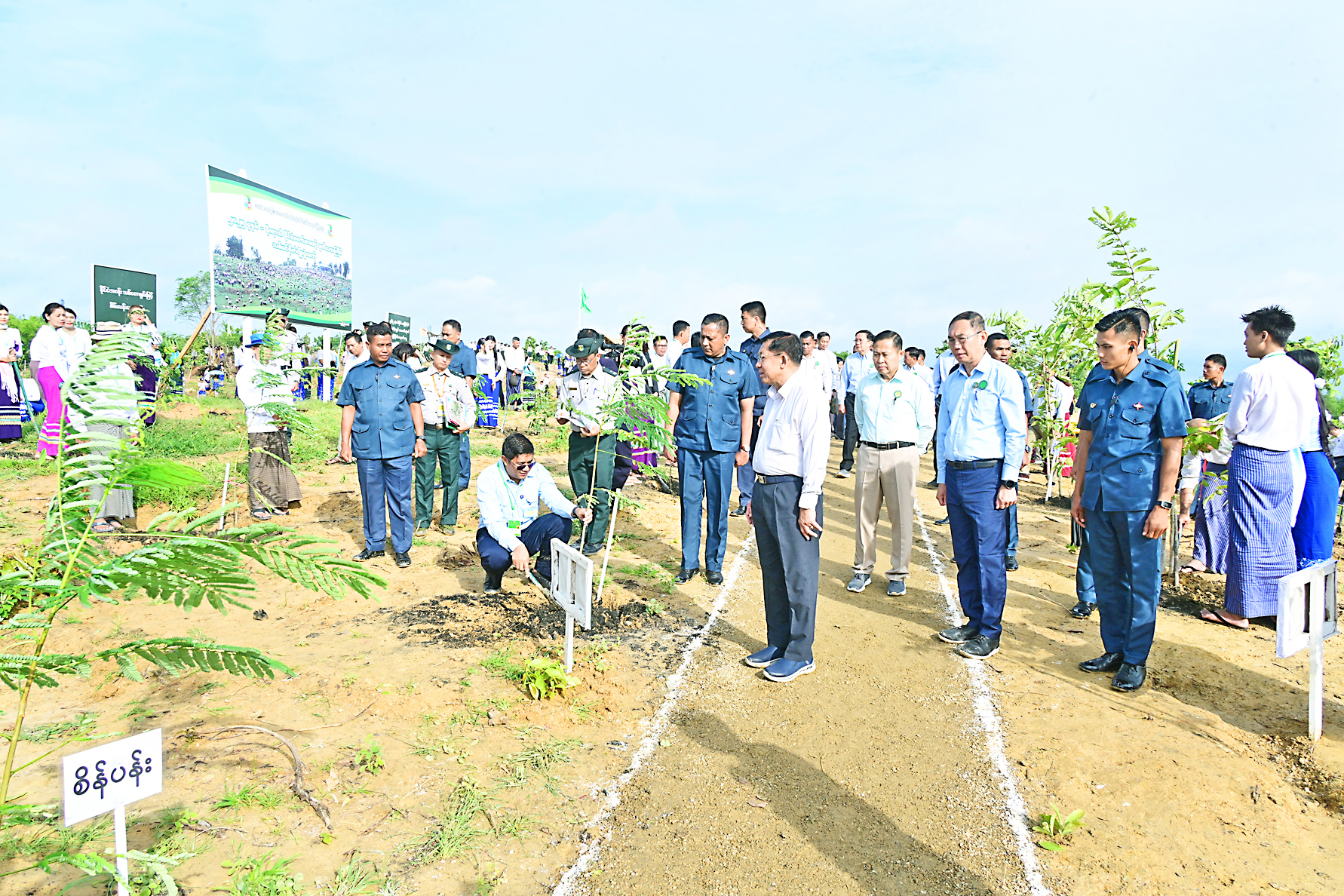
Researchers say that a vibrant environment where trees thrive can reduce stress and improve mental health.
Parks, streets and rural and urban areas dense with trees are ideal places for taking a walk or a rest or enjoying a cool shade and additionally, experiencing the tranquility and beauties of nature can provide humanity with health benefits.
Hence, tree planting and conservation are one of the investments that can yield substantial benefits for the country at present and the future generations.
Although tree planting is just a simple job, it can generate a large array of long-term benefits.
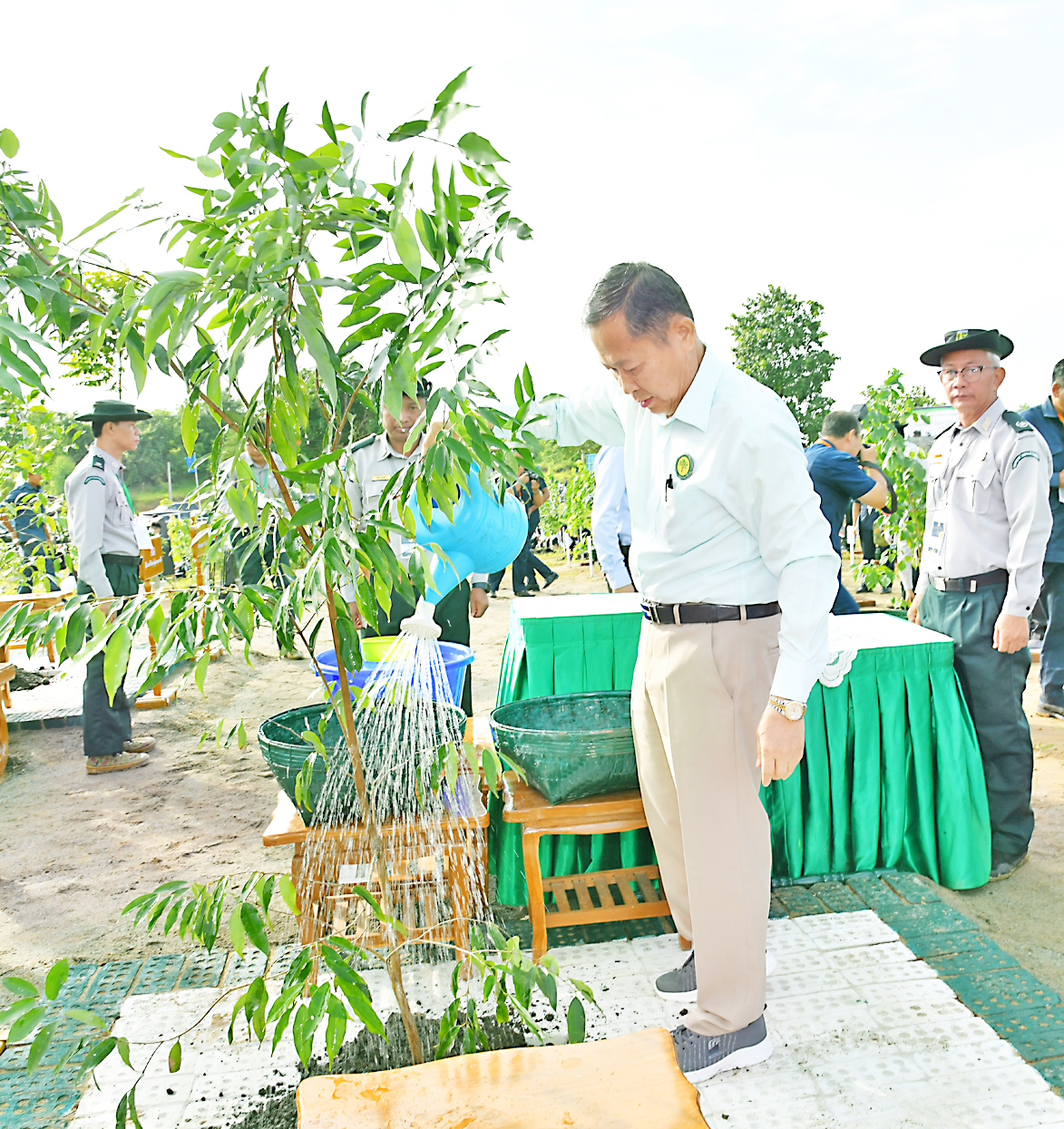
If a tree is planted, it will provide shade, fruits, fresh air and conserve water and soil as long as it thrives and grows.
So, tree-planting is a meritorious deed and once it is done, the benefits of the meritorious deed go on for many years throughout the future successive generations.
The merits gained by planting trees equal to that of donating a public resthouse, an outdoor passage, a pagoda, or a monastery.
Besides, a tree grower can enjoy health and longevity.
Global population growth, alongside forest depletion and environmental degradation pose a significant threat to the sustainability of vital ecosystems.

International organizations, governments and peoples in jointly implementing various categories of ecosystem conservation strategies are now prioritizing the work of designating conservation areas such as forest reserves, protective forests, and nature conservation areas.
The Mandalay, Magway, and Sagaing regions classified as Myanmar’s tropical zones along with the country’s lower regions, play a vital role in national agricultural production.
Although these regions possess strong foundations crucial to the livelihoods of millions of local residents, persistent drought, extreme heat, and limited water availability hinder the growth of crops and trees.
It is widely recognized that in 2024, Myanmar experienced extreme heat, largely attributed to the El Niño phenomenon intensified by climate change.
Therefore, the government is implementing initiatives aimed at restoring the ecosystem of the tropical regions, enhancing greenery, and improving overall climate conditions.
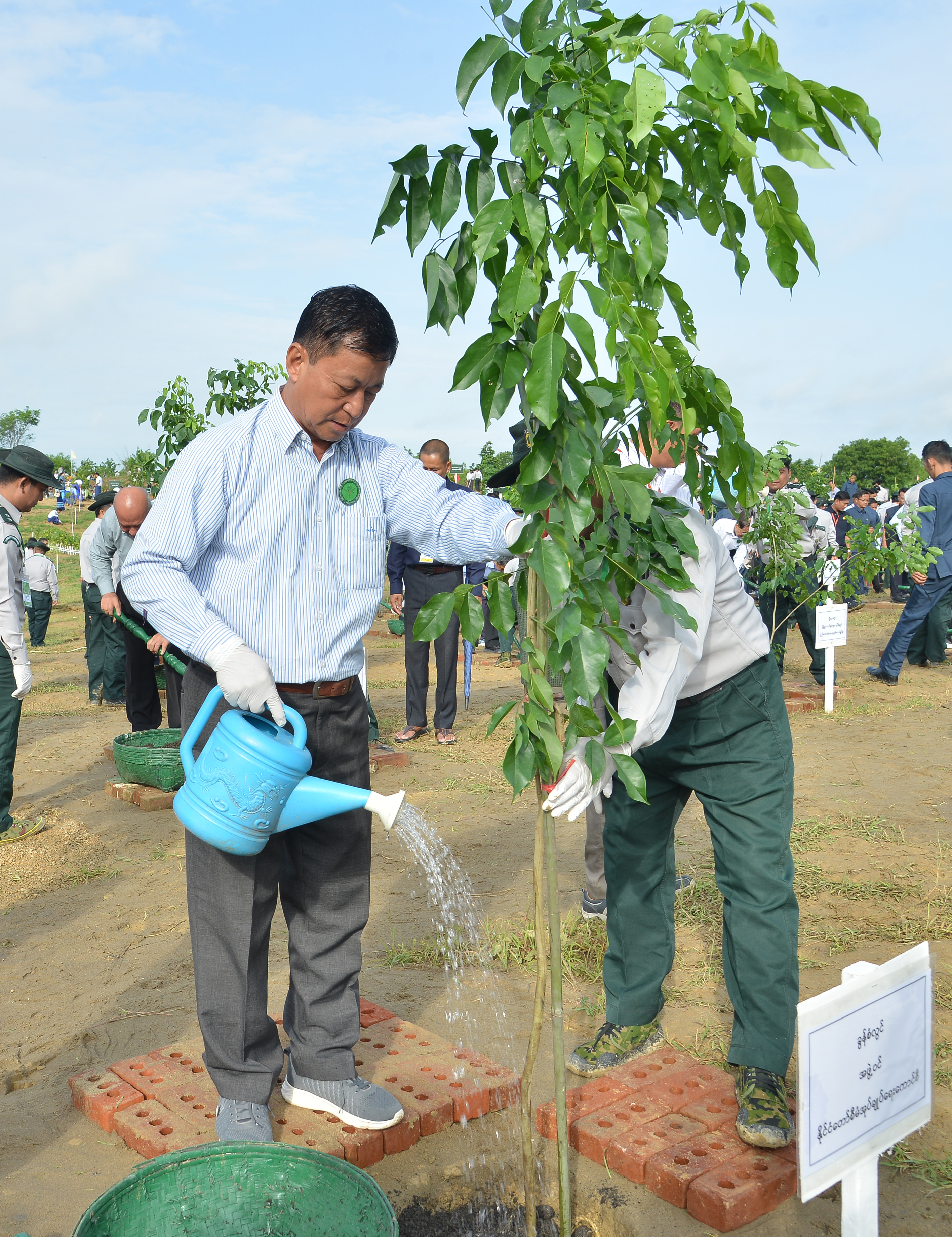
To accelerate greening efforts across 13 districts, the government is implementing a range of strategies, including expanding forest coverage, planting trees along roadsides to support soil and water conservation, and establishing village level tree plantations, with each village allocating two acres for this purpose.
To mitigate natural disasters such as floods, landslides, soil erosion, and strong winds, conservation efforts are also being carried out in critical areas, including hills, mountain peaks, riverbanks, dam watersheds, coastal mangrove forests, and surrounding ecosystems.
Tree planting and conservation activities serve as key drivers in preserving ecosystems and promoting tropical greening, offering effective nature-based solutions to environmental challenges.
Therefore, the public is strongly urged to recognize the importance of these efforts and actively participate in them as a national responsibility.
On this occasion, he stated that he would like to speak about the country’s efforts to ensure the long-term sustainability of its forest resources.
He stated that the country is the second largest in Southeast Asia after Indonesia and is endowed with abundant natural resources owing to its geopolitical significance, distinctive geophysical characteristics, and unique geographical location.
The country also encompasses a diverse range of ecosystems across its regions, extending from the glaciers in the north to the coastal and marine archipelago ecosystems in the south.

Measures are being taken to increase the forest coverage of the country and to protect prominent geophysical distinctive sites by designating 30 percent of the area of the country as forest reserves, protected areas and 10 percent of the area of the country as nature reserves.
During the term of the State Administration Council, it has formed 61 forest reserves/ protected areas covering 6.6 lakh of acres and 16 nature reserves covering 6.1 lakh of acres. So far, 1,324 forest reserves/ protected areas covering 25.94 percent of the area of the country and 62 nature reserves covering 6.43 percent of the area of the country have been established and continued efforts are called for to meet the targets.
To leave lush green environmental legacy to citizens and new generations, relevant ministries and departments, Nay Pyi Taw and regional and state governments and all the people are solemnly urged to make concerted efforts to expand the forest coverage of the country to 50 percent of the area of the country.
As the abundance in forest resources and socioeconomic development are directly related, ecological services will be better as long as forest coverage expands. Moreover, production of forest products such as timber, bamboo and rattan will increase, contributing to the sustainable development of the country.
That is why the government has adopted a policy to plant trees and has been implementing it with all seriousness.
All citizens are urged to protect existing trees and forests, to plant shady trees, windbreaks, seasonal flowering plants in their compounds, villages, wards, townships and on both sides of roads and to cultivate them so that every tree is growing well.
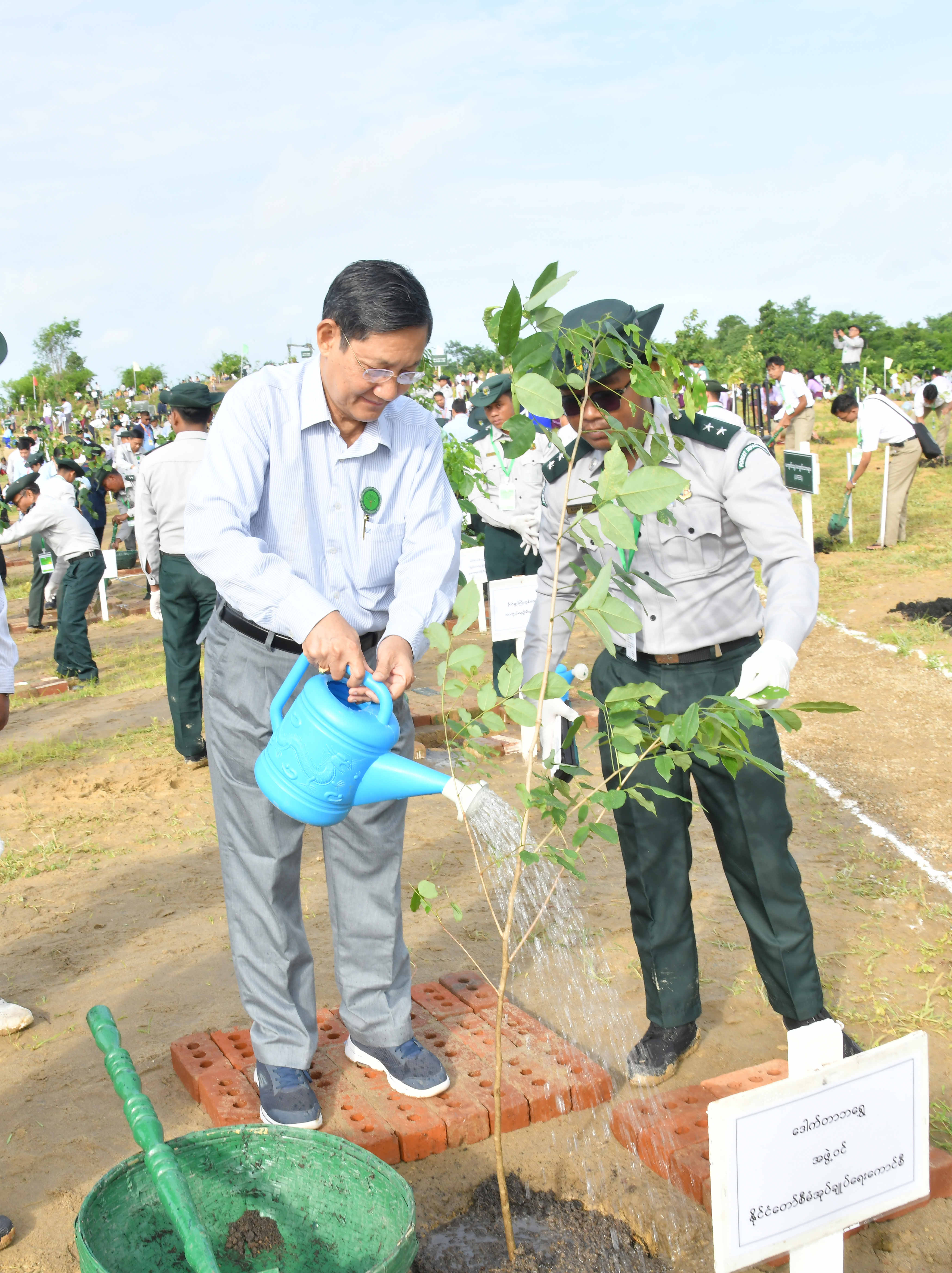
The role of trees and forests is important in sustainable development of the country, food security, healthy and happy lives of the people and prevention of some natural disasters.
Trees and forests are very important parts in establishing green cities, clean cities, smart cities and green villages.
As trees and flowering plants not only contribute to a green and pleasant environment but also create an environment of peace of mind, freedom, happiness and freshness of the people, efforts to create such an environment will be seeds of pride, happiness and patriotism.
It is necessary to take measures for conservation of trees and forests by systematically considering them from all points of view as a national task. Everyone is urged to make concerted efforts for the greening and pleasantness of all rural and urban areas across the country and peace and pleasantness of the environment and world from the current tree-planting ceremony.
Then, the Senior General inaugurated the ceremony by planting a star-flower sapling at the designated place.
Afterward, the Vice Senior General, the SAC secretary, the SAC joint secretary, SAC members, union level officials, union ministers, guests, students, staff and officials from ministries and departments planted saplings.
The Senior General inspected the tree planting activities of the monsoon tree planting ceremony 2025.
A total of 3,000 saplings from 18 kinds of trees were planted at the second monsoon tree planting ceremony 2025 today.
